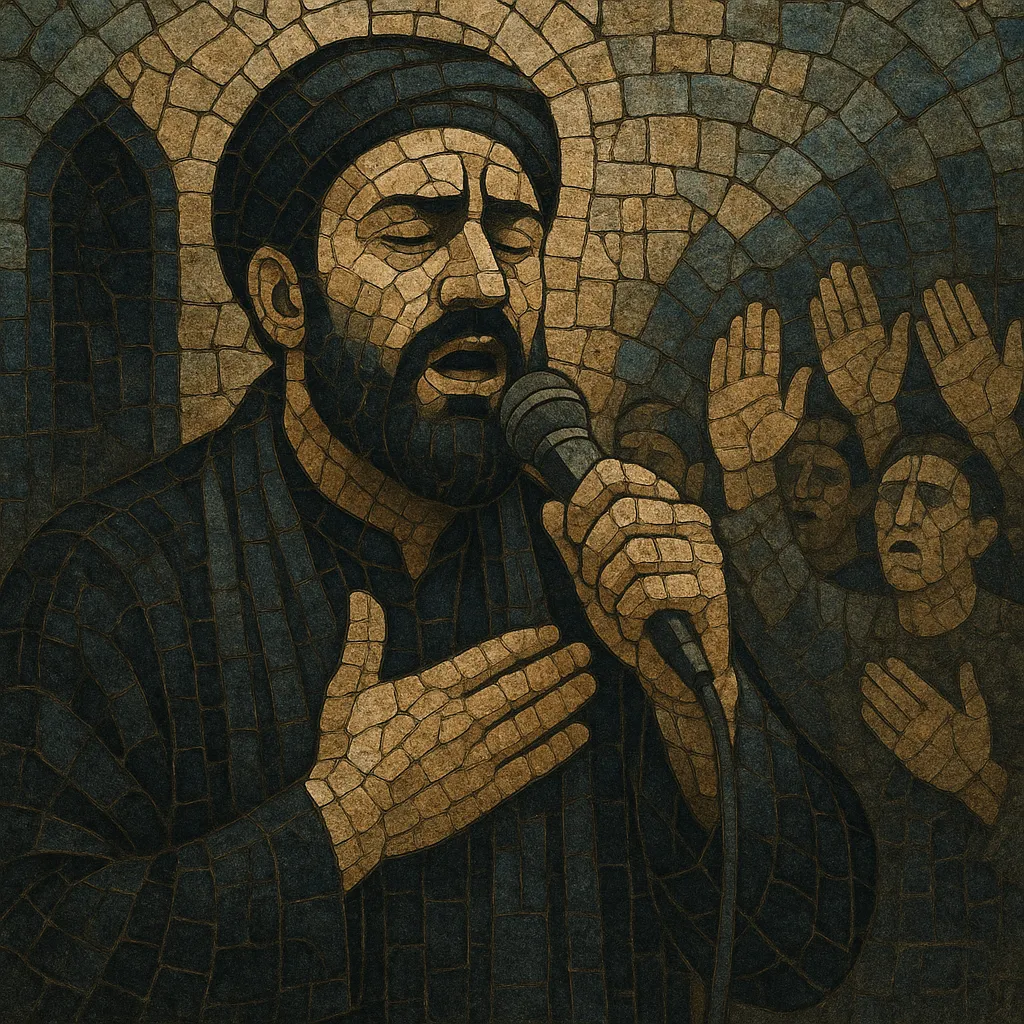Maddahi (Persian: مداحی) is a Shi'a Islamic devotional vocal tradition from Iran in which a lead eulogist (maddāh) chants praise (madīh) and elegies for the Prophet Muhammad and the Ahl al-Bayt, especially during Muharram and other mourning observances. It foregrounds the voice as the principal instrument, often supported by collective responses, rhythmic chest-beating (sinehzani/latm), and, in some regions or modern contexts, restrained percussion.
Melodically, maddahi draws on the Persian dastgāh modal system and flexible recitative intonation. Texts are poetic and rhetorically charged, moving between encomium and lament, and are designed to activate communal memory and catharsis through repetition, crescendos, and call-and-response.
Performances occur in mosques, ḥosseinīyehs, shrines, neighborhood gatherings, and processions. The style ranges from intimate unaccompanied recitation to amplified, stadium-scale renditions, yet its core remains devotional message, communal participation, and emotionally intense delivery.
Maddahi crystallized in Iran as a distinct Persian-language devotional practice during the Safavid period (1500s–1600s), when Twelver Shi'ism became the state creed. Earlier Arabic traditions of madīh (praise poetry) and elegiac recitation around Karbala narratives met Persian poetics and the dastgāh modal system, giving rise to a localized, chant-led eulogy art.
By the Qajar era (1800s), maddahi had become integral to Muharram ceremonies in urban tekyehs and ḥosseinīyehs. Professional eulogists refined vocal delivery, modal choices, and pacing to align with processional rhythms (latm) and ta'ziyeh passion plays, while poets produced dedicated noha/marsiya texts in Persian and Arabic.
In the Pahlavi period, recordings and radio began circulating devotional voices beyond local halls. After 1979, maddahi expanded dramatically: cassettes, later CDs and satellite media, spread influential maddāhs nationwide and across the diaspora. During the Iran–Iraq War, martial and elegiac tones intensified, and iconic recordings of nohas became collective sonic symbols.
Since the 1990s–2000s, large amplified events, new poetic meters, and carefully staged dynamics have coexisted with conservative, a cappella practice. Digital platforms now shape repertoire circulation, while regional timbres (e.g., Khuzestan dammām drums in processions) and occasional restrained percussion appear. Despite format changes, the essential features—devotional text, modal chant, communal response, and ritual rhythm—remain central.


